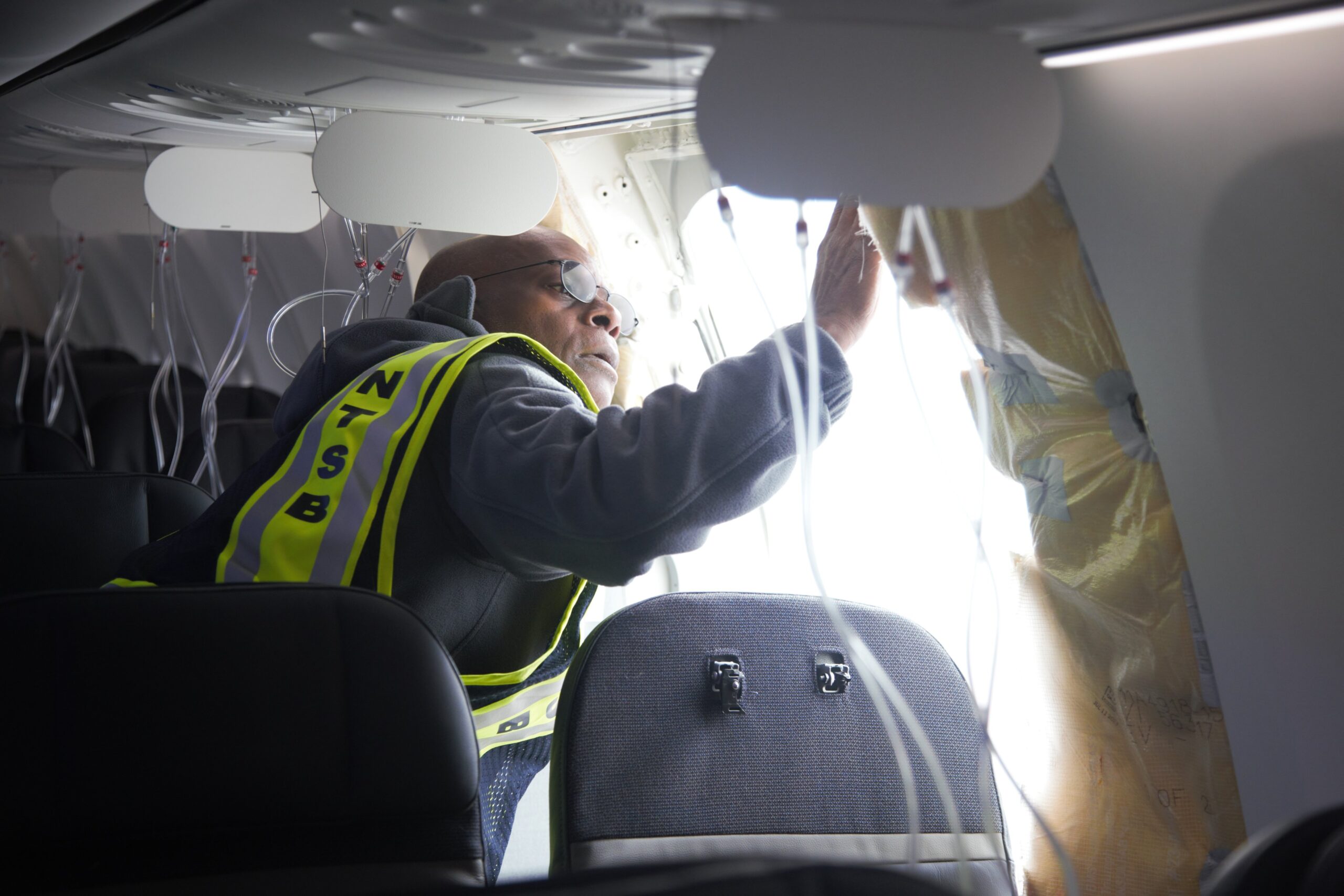
The Alaska Airlines plane that landed safely in Portland Friday despite an in-flight cabin wall blowout had ferried passengers to and from Alaska in recent weeks, including a flight 10 days prior from Anchorage to Honolulu.
A Flightaware.com search of the tail number of the 737 Max 9 from the Friday incident shows that the aircraft flew roundtrip from Seattle to Ketchikan on Dec. 7. That’s the day Alaska Airlines first saw an auto-pressurization warning light illuminate.
It went on to make six more flights to or from Alaska before Friday. Three of them were between Alaska and Hawaii.
It’s not clear the warning light is related to the mishap Friday, said National Transportation Safety Board Chair Jennifer Homendy.
“It’s certainly a concern. And it’s one that we want to dig into and look at what occurred there,” she said at a weekend media briefing about the blowout. “And if there is any relation at all, or correlation to what occurred on this event, we don’t know that at this time.”
The potential of what might have happened to Flight 1282 resonates especially among Alaskans, who take more flights per year than most Americans, and rely on Alaska Airlines more than any other major carrier.
At the time of the blowout, the aircraft was just a few months old. Alaska Airline had restricted the jet from long flights over water after a warning light that could signal a pressurization problem lit up on three flights, on Dec. 7 and twice in January.
In the Friday incident, the aircraft lost a section known as a door plug – a panel filling the space where an emergency door could be located in a different airplane configuration. Monday, United Airlines reported finding loose bolts securing the door plugs on several of its 737 Max – 9 aircraft.
All Max 9s in the U.S. are now grounded. Alaska Airlines said it canceled approximately 140 flights Monday, or about 15% of its normal schedule. A spokesman said only six of the canceled flights were to or from airports in Alaska.
Homendy, the NTSB chair, said that parts of several seats flew out of the hole in the aircraft Friday, as did the tray table on the back of seat 26A.
“The seats in (row) 26 and … 25 were torqued, and there was a lot of damage to the interior paneling trim,” she said. “My impression when I saw that is, it must have been a terrifying event to experience.”
All but seven seats on the plane were occupied, but not the two closest to the blowout.
Homendy noted that three of the passengers were so-called lap infants – babies under 2-years-old that ride on the lap of their parents or caregivers. Homendy took a moment at the media briefing to say that she advises parents to always buy a seat for their infants, and to strap them into it in a secure infant car seat.
Alaska Airlines recommends that, too.
An investigation into Friday’s decompression continues.
Liz Ruskin is the Washington, D.C., correspondent at Alaska Public Media. Reach her at lruskin@alaskapublic.org. Read more about Liz here.





